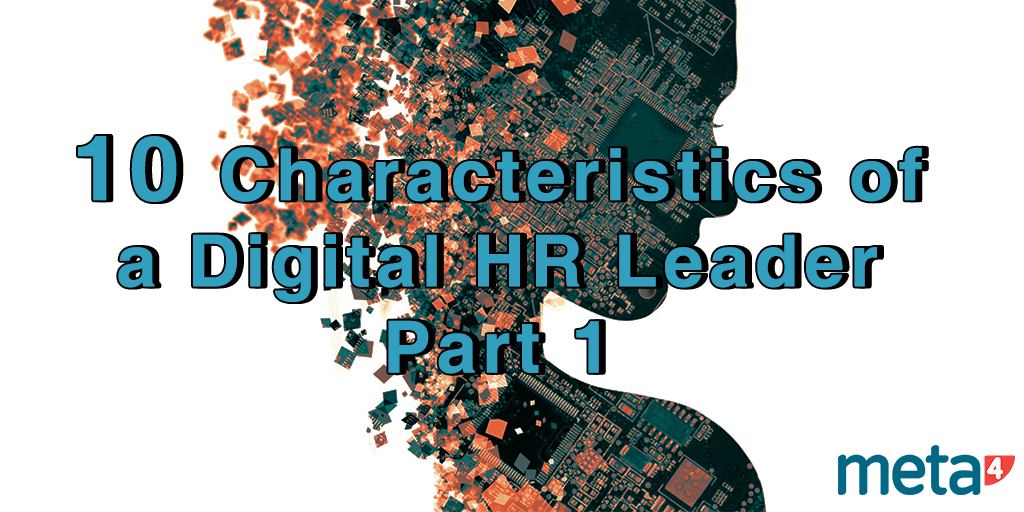Amidst this technology revolution, the objectives of HR leaders have remained fairly constant: to attract, grow, develop, reward, and retain the talent needed to achieve business goals.
So how well are CHROs doing? Recent Deloitte research found that “While CEOs and top business leaders rate talent as a key priority, only 5 percent of survey respondents rate their organization’s HR performance as excellent.” They also discovered that in fact, “Only 30 percent of business leaders believe that HR has a reputation for sound business decisions; only 28 percent feel that HR is highly efficient; only 22 percent feel that HR is adapting to the changing needs of the workforce; and only 20 percent feel that HR can adequately plan for the company’s future talent needs.”
HR leaders are being called on to bring new skills and capabilities to meet the challenges of a digital, global, and dynamic business environment.
1. Strategic thinking
In the digital age of knowledge workers, the calibre of an organization’s talent will increasingly become a key differentiator. Technology will automate whatever can be automated, but will leave untouched the sphere of human creativity and innovation.
So if talent will largely determine success or failure of an organization, those responsible for leading talent acquisition, growth, and retention will increasingly be in pivotal roles.
That organizations are struggling to procure the quality of talent they require is evident in recent research:
- Almost three in four organizations report difficulties attracting critical-skill employees, and more than half report difficulties retaining them (Towerswatson, 2013).
- More than 60 % of all companies cite leadership gaps as their top business challenge (Bersin, 2014); 83% of companies are seriously worried about their leadership pipelines and only 8% have strong programs to build leadership skills in their millennial populations. Retention and engagement remain the number two issue around the world (Bersin 2015: Predictions).
- 56% of executives see critical gaps in their ability to fill senior managerial roles in coming years (Boston Consulting Group, proprietary research).
- 63% of CEOs say they are concerned about the future availability of key skills at all levels (PricewaterhouseCoopers, 2014).
Furthermore, research indicates that those organizations who approach the acquisition and development of talent in a strategic way, achieve better business results.
Bersin found that “while most organizations are engaged in many types of talent management efforts, many companies lack a clear talent strategy with advanced processes in place. Our research finds that organizations which perform well on business outcomes have a talent strategy. By contrast, of those organizations rated least effective at business outcomes, between 70 percent and 80 percent lack a talent strategy or are implementing a new strategy.”
“In addition, those organizations with a talent strategy are 4.2 times more likely to be in the top quartile of business outcomes. Our research indicates that this relationship holds true, regardless of organization size, industry, or geography” (Bersin, April 2015) .
HR leaders will therefore need to bring a strong strategic mindset to the people challenges of their organizations. Whilst borne out by research, it is perhaps also intuitive that in an increasingly open, transparent, fluid global labour market, only deeply rooted strategic initiatives will prove to be difficult for competitors to replicate quickly.
2. Curious, quick-to-learn, and agile
Perhaps due to its process and compliance focus, historically, the HR function has not commonly been associated with curiosity and agility. As the pace of technologic change and innovation grows exponentially, the solutions that work today will be ineffective tomorrow.
HR leaders will need to bring curiosity to their roles, identifying trends that could present challenges or opportunities, and actively enquiring and investigating. In an increasingly fast moving environment, those who are curious and quick to learn will gain advantage.
Agility will be another key differentiator, as HR leaders will increasingly recognize that just as product and delivery cycles accelerate, so HR solution lifecycles must accelerate.
3. Willing to take risks
Again HR has often been characterized as risk-averse. How many times has HR lost their voice in strategic decisions or market innovations because of their focus on compliance, governance issues, and the potential problems they can foresee?
This cautious approach will not serve HR leaders well in an environment where safe, known solutions are unlikely to be found, and if they are, they will be yesterday’s solutions, and as such will fail to yield competitive advantage.
4. Enabling, not controlling
With the advent of the Cloud, the predominant HR voice was one of concern about data security, about process control, and about governance issues. The arrival of social media tools was greeted by HR with a flurry of policies and controls to manage employee behaviour in these new environments.
But technology can be a great enabler, those HR leaders who focus less on the control issues (although guidelines will be needed), and more on the opportunities the technology provides will better serve their organizations.
Whoever can harness the immense potential of MOOCs for flexible and customized learning, and whoever can build strong authentic online collaboration tools and feedback mechanism within their organizations will yield considerable benefits. These will more than outweigh any costs of employees using personal social media tools during work hours.
5. Future focused
When the pace of change is slow, it is often sufficient to be reactive and responsive. But in our fast paced digital world, those HR leaders who are unremittingly future focused will be best placed to meet the talent challenges they face.
In talent acquisition, this may involve strategies that actively foster relationships with key talent long before vacancies are open. Talent pools can be managed, relationships can be built with potential candidates, pre-screening assessment can be carried out, and some investment can be made in strong candidates to make them enthusiastic about the organization. Strategic alliances can be built with communities and social media groups who align closely with your critical profiles.
Similarly a focus on succession planning will reduce lost opportunities and vulnerability when critical posts are left vacant. Only 32% of organizations have a steady supply of leaders at the top levels, and only 18% hold their leaders accountable to identify and develop successors on a regular basis (Bersin 2015: Predictions).
The underlying question of how an organization defines and measures talent is even more fundamental in this future focus. Whilst we have seen experience give way to skills, and skills be replaced by competencies as the most popular talent metric, a recent HBR article, says that “In a volatile, uncertain, complex, and ambiguous environment competency-based appraisals are increasingly insufficient…the question is not whether your employees have the right skills, it’s whether they have the potential to learn new ones.” (Claudio Fernández Aráoz, HBR, 2015).
HR leaders will increasingly be called upon to play a key role in identifying future opportunities, in assessing likely future strategies of key competitors, and of equipping their own organizations to complete well in tomorrow’s marketplace. To nurture this sort of future focus, HR leaders will have to cultivate and maintain good networks to obtain input from diverse sources, as well as rely on their own intuition and judgment to spot which future trends are the most important.






